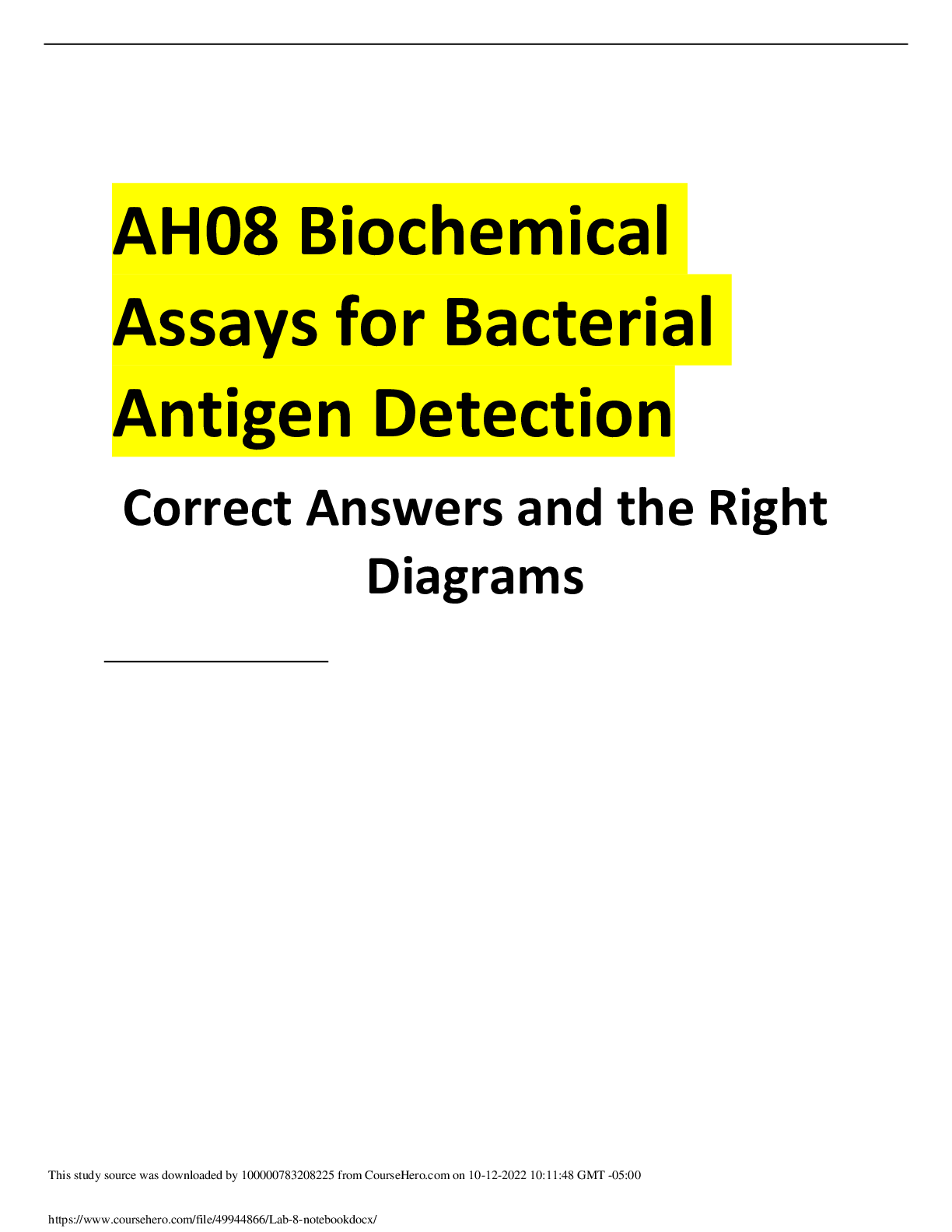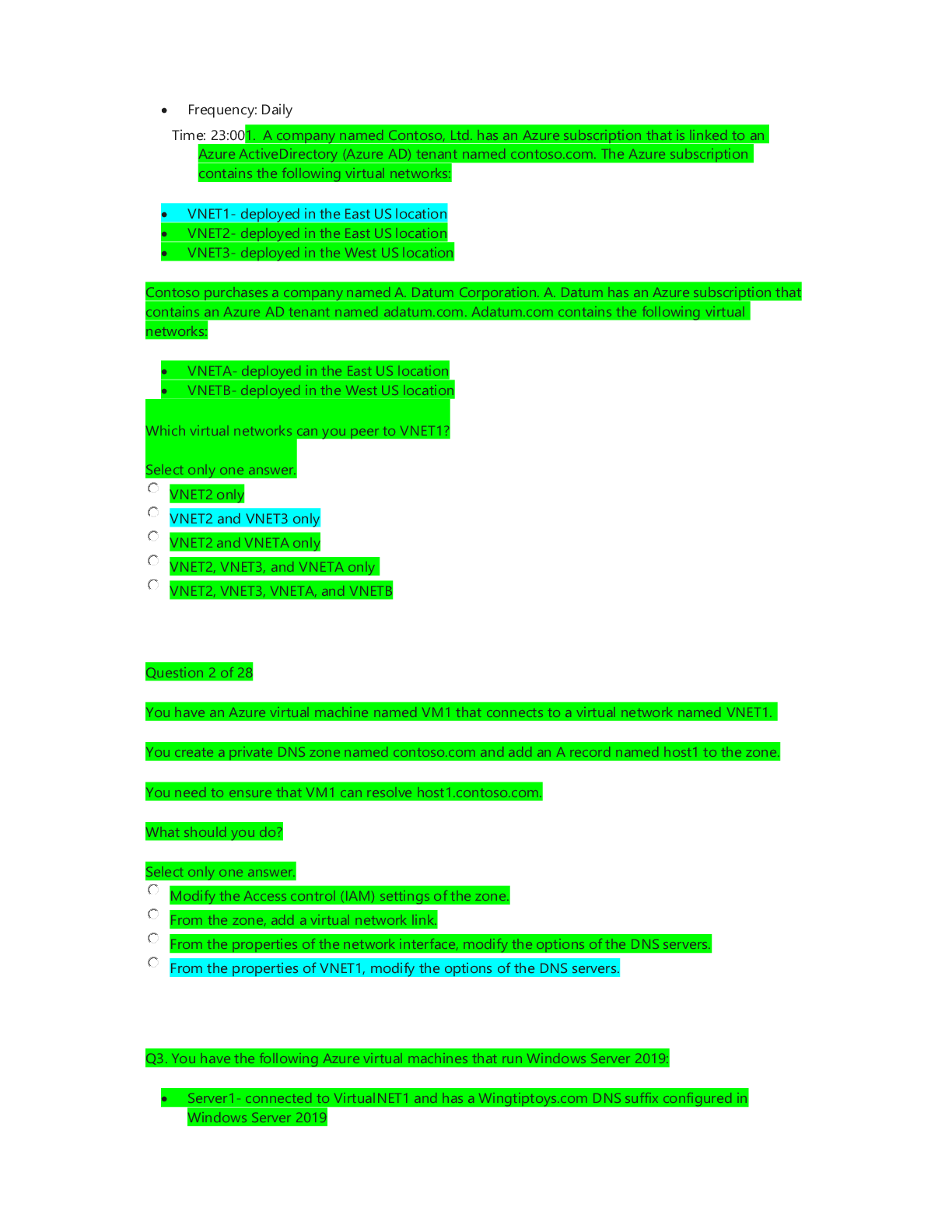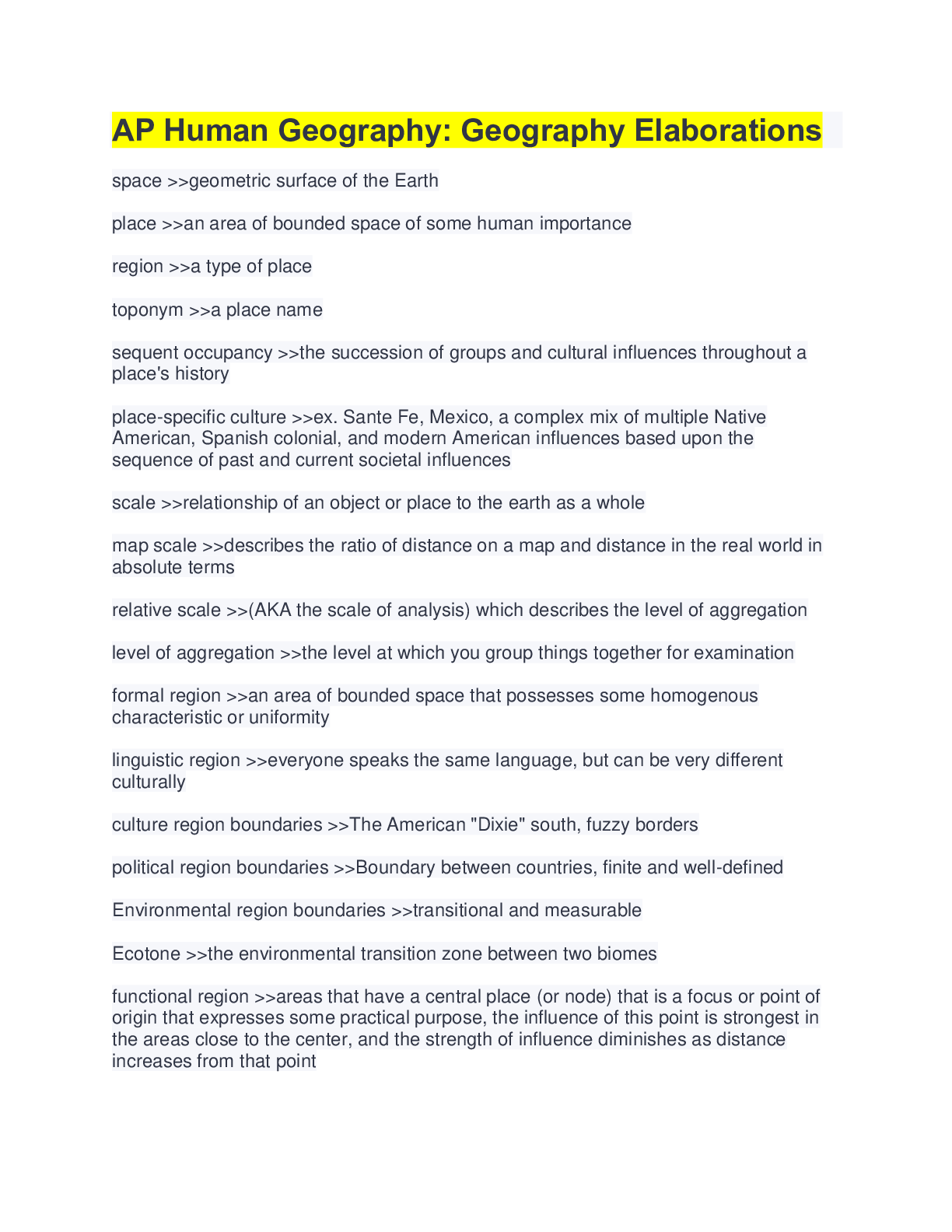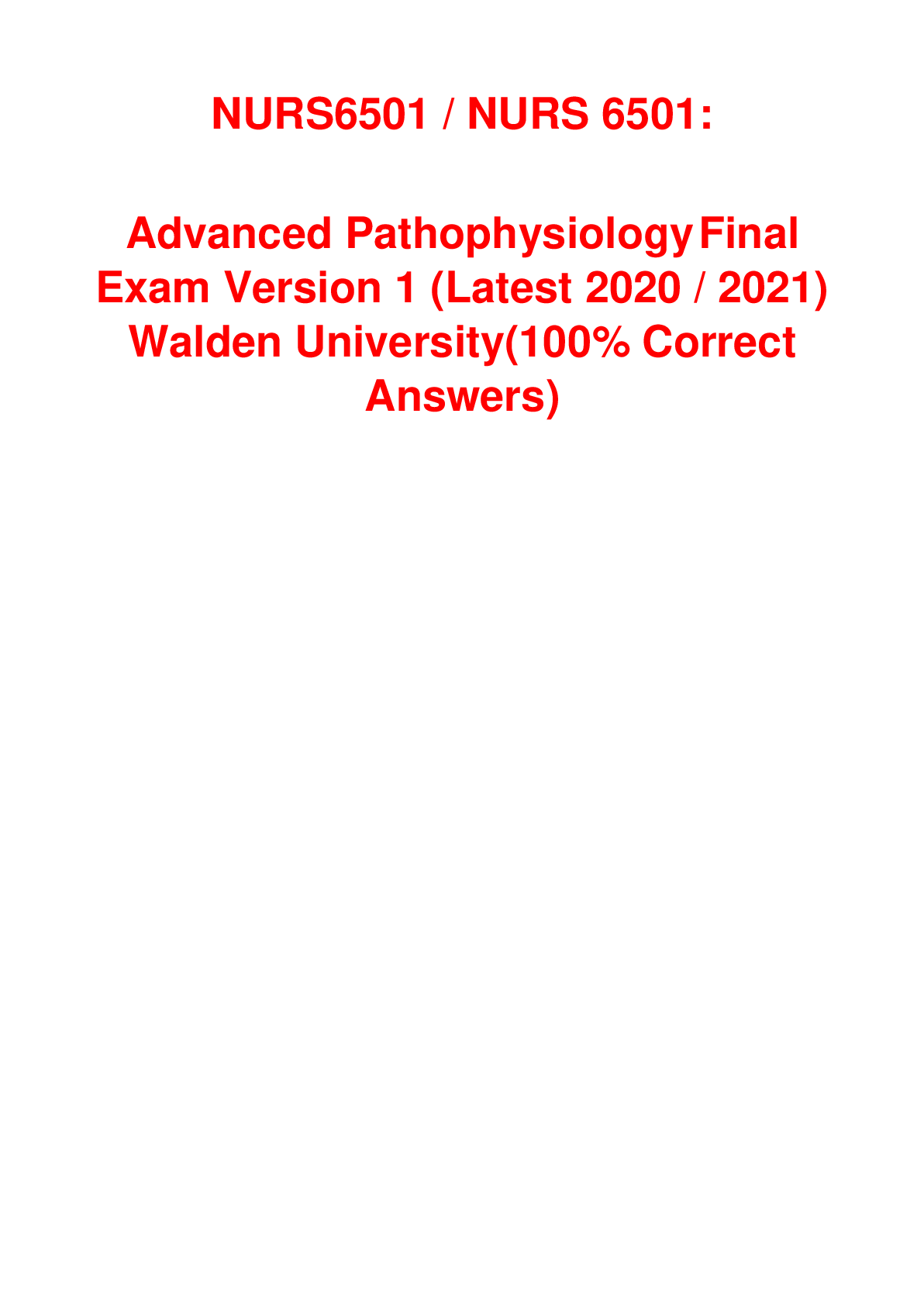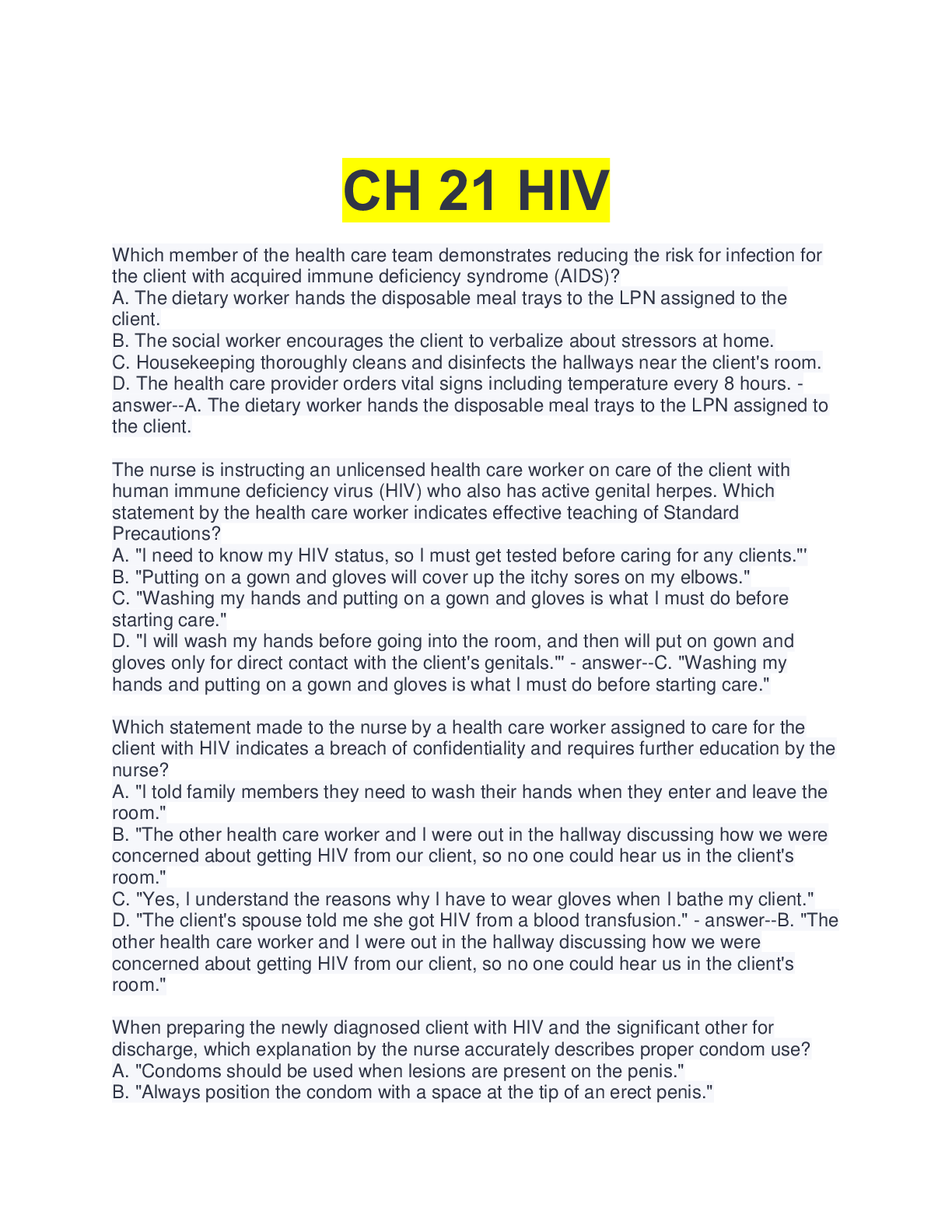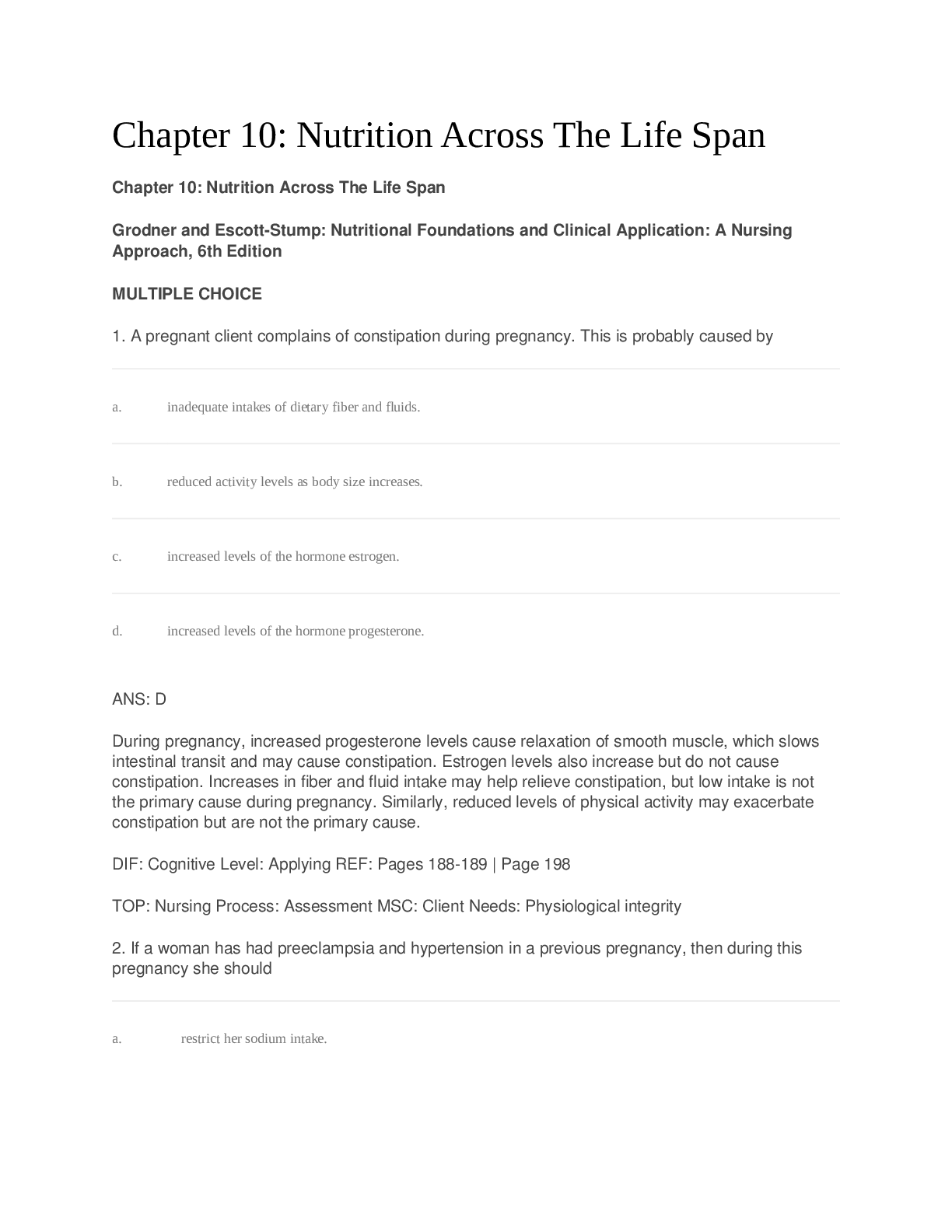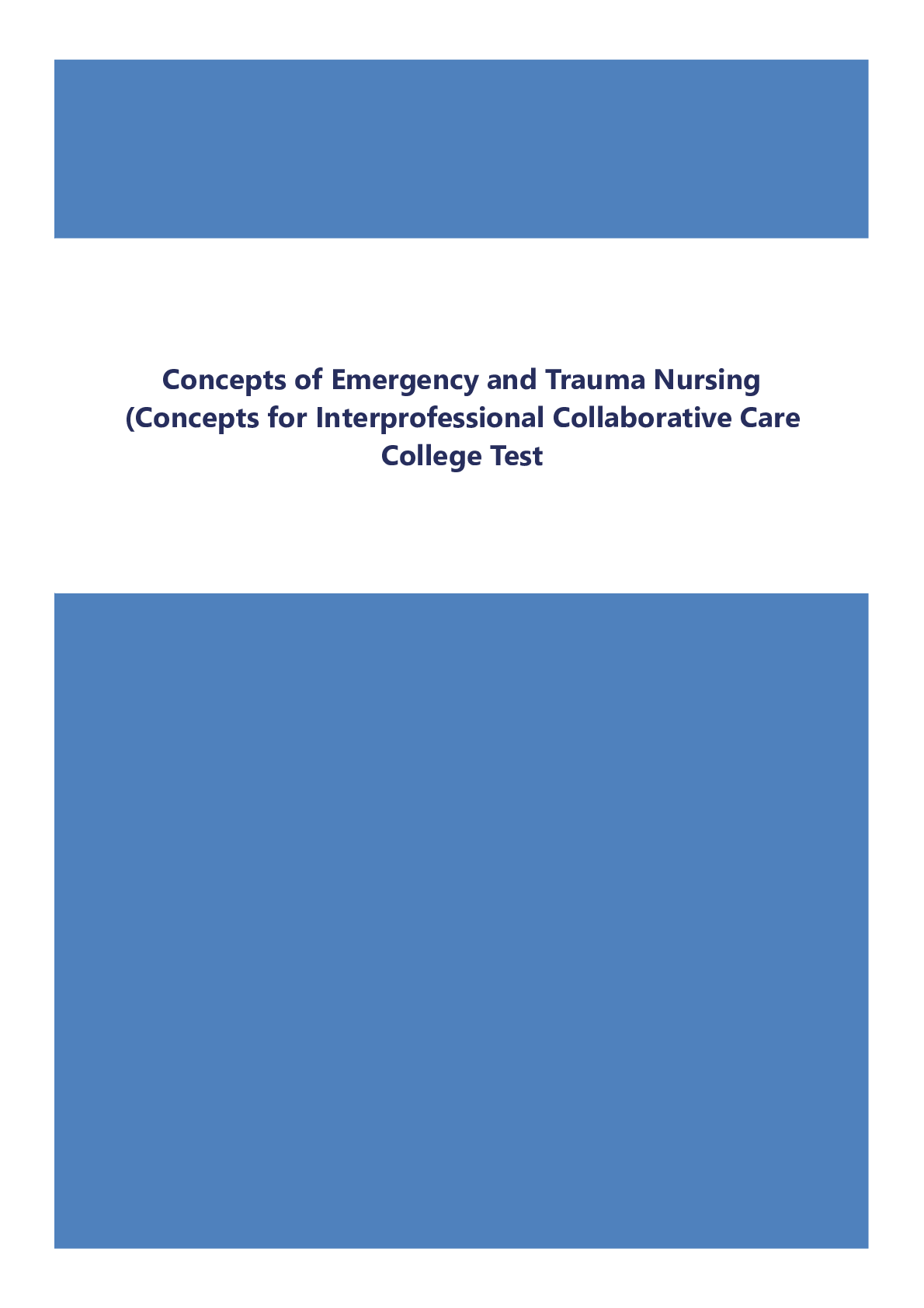Concepts of Emergency and trauma nursing
Document Content and Description Below
Concepts of Emergency and trauma nursing SBAR - answers--S= situation B= background A= assessment R= response Reasons people seek ED care - answers--Abdominal pain chest pain breathing diffic... ulty injuries (especially falls) headache fever pain (most common) Triage - answers--Sorts/classifies patients into priority levels according to illness or injury severity. Triage 3 types - answers--Emergent, urgent, and non-urgent. Emergent - answers--Respiratory distress, chest pain, hemorrhage Emergent (life-threatening) - answers--Crushing substernal chest pain, SOB, diaphoresis, active hemorrhage, unstable vital signs. Urgent - answers--Abdominal pain, fractures, soft tissue injuries Urgent (needs quick treatment but is not immediately life-threatening) - answers--New onset of pneumonia as long as respiratory failure doesn't appear imminent, Renal colic, complex lacerations not associated with major hemorrhage, displaced fractures or dislocations, temp. >101°F, severe abdominal pain, and complex or multiple soft tissue injuries. Nonurgent (can wait several hours if needed without fear of deterioration) - answers--Simple fracture, Skin rash, strains/ sprains, and "cold" symptoms. Mechanism of injury - answers--Blunt trauma, acceleration - deceleration forces, penetrating trauma, etc. Signs of tension pneumothorax - answers--Decreased or absent breath sounds over affected side. Respiratory distress. Hypertension. Jugular vein distention. Tracheal deviation. ABCDE - answers--Airway/cervical spine Breathing Circulation Disability Exposure ABCDE - answers--It's life-threatening conditions related to ABCD are identified during primary survey, interventions are started immediately and before proceeding to the next step of the survey. Primary survey airway S/S - answers--Dyspnea, inability to vocalize, presence of foreign body in airway, and trauma to face or neck Primary survey airway interventions - answers--Open airway using the job thrust maneuver. Suction and/or remove foreign body. Insert nasopharyngeal/oropharyngeal airway. Provide endotracheal intubation. Primary survey airway interventions - answers--Rapid-sequence intubation. (preferred procedure for unprotected airway and involves sedation or anesthesia and paralysis) Stabilize/immobilize cervical spine (Face, head, or neck trauma and/or significant upper torso injuries) Primary survey breathing S/S - answers--Assess for dyspnea, cyanosis, paradoxic/asymmetric Chestwall movement, decreased/absent breath sounds, tachycardia, hypotension. [Show More]
Last updated: 2 years ago
Preview 1 out of 8 pages

Buy this document to get the full access instantly
Instant Download Access after purchase
Buy NowInstant download
We Accept:

Reviews( 0 )
$13.00
Can't find what you want? Try our AI powered Search
Document information
Connected school, study & course
About the document
Uploaded On
Sep 26, 2022
Number of pages
8
Written in
Additional information
This document has been written for:
Uploaded
Sep 26, 2022
Downloads
0
Views
64



